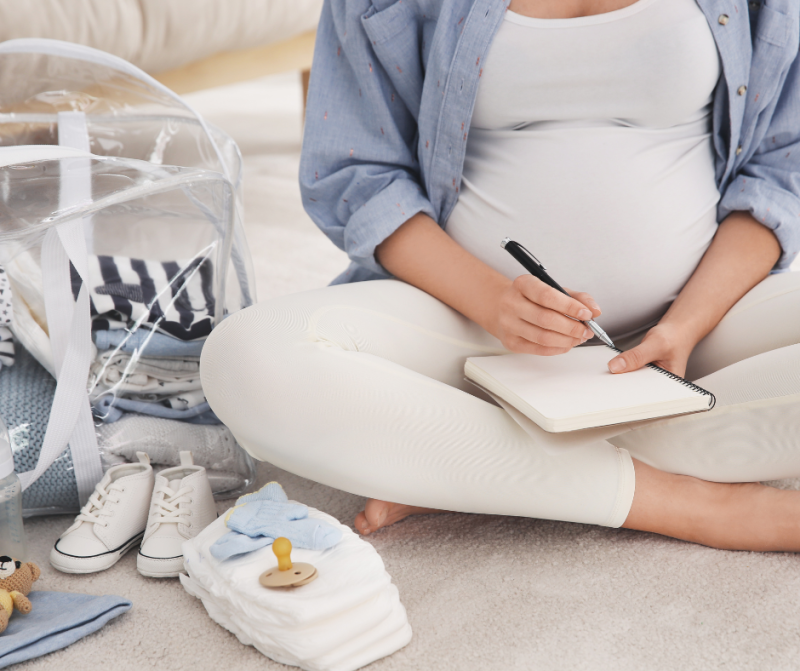Understanding the legalities behind maternity rights can be daunting for expecting parents.
With so many rules and terms to understand, it’s no wonder confusion often arises between maternity pay and maternity allowance. Yet, having clarity on these benefits is essential for proper planning and peace of mind.
This blog aims to demystify the key differences between Statutory Maternity Pay (SMP) and Maternity Allowance (MA), providing you with the information you need to make informed decisions regarding your maternity plan.
Understanding Maternity Pay and Maternity Allowance
What is Maternity Pay?
Statutory Maternity Pay (SMP) is a benefit provided by employers to eligible employees during maternity leave. It is designed to offer financial support to new mothers, helping them cope with the reduction in income while they are away from work.
Eligibility Criteria
To qualify for SMP, you must:
- Be employed and have worked for the same employer for at least 26 weeks up to the 15th week before your due date (known as the “qualifying week”).
- Earn an average of at least £123 per week for 8 weeks before your qualifying week (as of 2024).
Payment Details:
SMP is paid for up to 39 weeks:
- For the first 6 weeks, you receive 90% of your average weekly earnings.
- For the remaining 33 weeks, you get the lower of either £184.03 per week or 90% of your average weekly earnings.
What is Maternity Allowance?
Maternity Allowance (MA) is a benefit for those who do not qualify for SMP.
The government administers it and offers financial support to new mothers who are self-employed, have recently changed jobs, or haven’t met the earnings or length-of-employment requirements for SMP.
Eligibility Criteria
To qualify for MA, you must:
- Have been employed or self-employed for at least 26 weeks in the 66 weeks before your baby’s due date.
- Earn at least £30 per week on average over any 13 weeks within that period.
Payment Details:
MA is paid for up to 39 weeks at the following rates:
- £184.03 per week (as of 2024) or 90% of your average weekly earnings (whichever is lower).
Key Differences Between Maternity Pay and Maternity Allowance
Eligibility Requirements
Employment Status:
SMP requires you to be an employee.
MA is available for both employees and self-employed individuals.
Length of Employment:
To receive SMP, you must have worked for your employer for at least 26 weeks up to the qualifying week.
MA requires 26 weeks of employment out of the 66 weeks before your due date, but these weeks do not need to be consecutive.
Earnings Threshold:
SMP has a minimum earnings threshold of £123 per week.
MA has a lower minimum earnings threshold of £30 per week.
Payment Amounts and Duration
Amount Paid:
SMP: 90% of your average weekly earnings for the first 6 weeks, followed by £184.03 or 90% of your earnings (whichever is lower) for the next 33 weeks.
MA: £184.03 per week or 90% of your average weekly earnings (whichever is lower) for up to 39 weeks.
Duration of Payments:
Both SMP and MA are paid for up to 39 weeks.
Entitlement Criteria
Conditions for Receiving Payments:
SMP payments are subject to providing the employer with the correct notice and proof of pregnancy.
MA requires an application to the government along with proof of employment and earnings.
Overlap and Exclusivity:
You cannot receive both SMP and MA at the same time. If you are eligible for both, you must choose one.
How to Apply for Maternity Pay and Maternity Allowance
Application Process for Maternity Pay
Steps to Apply:
- Inform your employer at least 28 days before you intend to start your maternity leave.
- Provide your employer with your MATB1 certificate, which you’ll receive from your midwife or doctor. You can also give your employer a letter from your doctor or midwife.
Employer’s Role:
Your employer will process your SMP payments through their payroll system.
Application Process for Maternity Allowance
Steps to Apply:
- Obtain the MA1 claim form from the GOV.UK website or your Jobcentre Plus.
- Complete the form and send it along with the required documents (e.g. payslips and proof of earnings) to the address provided on the form.
Contacting HMRC:
For assistance, contact HMRC directly via their helpline or through the online portal.
Common Questions and Concerns
How Much Is Maternity Allowance in 2024?
The MA rate in 2024 is £184.03 per week, or 90% of your average weekly earnings, whichever is lower. This is the same as the lower SMP rate, making MA a viable alternative for those who don’t qualify for SMP.
How Long Do You Have to Work for a Company to Get Maternity Pay?
To receive SMP, you must have worked for your employer for at least 26 weeks, up to the 15th week before your baby’s due date. Employment breaks can impact eligibility, so continuous employment is crucial.
Tips and Advice for Expecting Parents
Planning Ahead
Financial Planning:
Start budgeting early to cover the income gap during your maternity leave. Consider savings plans and explore other benefits you might be eligible for.
Employer Communication:
Discuss your maternity leave plans with your employer well in advance. Transparency and clear communication can help ensure a smooth transition.
How Tann Law Solicitors Can Help
Consulting with a legal expert can help you understand your rights and ensure you receive the benefits you’re entitled to.
Tann Law Solicitors offers comprehensive legal services to guide you through the complexities of maternity benefits. Contact us if you’d like personalised assistance and advice.
Conclusion
Understanding the differences between statutory maternity pay and maternity Allowance is crucial for expecting parents.
Both benefits offer financial support but have different eligibility requirements and payment structures. Make sure you are well-informed so you can plan effectively and secure the benefits you deserve.
For personalised legal advice, contact Tann Law Solicitors today to ensure you’re fully prepared for this exciting new chapter.

